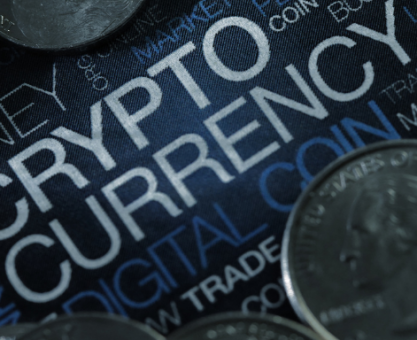Executive Summary
-
NFTs (Non-Fungible Tokens) are emerging as powerful diversification tools in modern crypto portfolios.
-
They provide access to new asset classes like digital art, music rights, and virtual real estate.
-
Investors can benefit from unique ownership, potential appreciation, and exposure to new markets.
-
Risks include regulatory ambiguity, market volatility, and liquidity constraints.
-
This guide walks you through the process of evaluating, acquiring, and managing NFTs for investment purposes.
Introduction
Cryptocurrency investment is no longer limited to coins and tokens—NFTs have emerged as a disruptive new category. Representing unique digital assets verified on the blockchain, NFTs are creating fresh opportunities for portfolio diversification. From rare digital art to tokenized assets, they offer investors a different kind of value proposition—scarcity, exclusivity, and creator-driven markets. This article explores how to smartly integrate NFTs into your cryptocurrency strategy for improved growth and balanced exposure.
Definitions / Context
NFTs (Non-Fungible Tokens) are unique digital assets stored on a blockchain that certify ownership of items such as artwork, collectibles, music, or virtual real estate.
Unlike traditional cryptocurrencies (like Bitcoin or Ethereum), NFTs are indivisible and non-interchangeable—each token has distinct value and metadata.
Benefits / Pros
-
Unique Ownership & Scarcity – NFT ownership is provable and verifiable, creating digital scarcity that drives value.
-
Market Diversification – Adds non-correlated assets to your crypto portfolio, reducing reliance on token market cycles.
-
Cultural Relevance & Demand – NFTs often reflect cultural trends (e.g., art, sports, gaming), tapping into emerging demand.
-
Early Entry Advantage – Being an early mover in specific NFT sectors (e.g., music rights or metaverse land) can yield exponential returns.
Risks / Cons / Challenges
-
Liquidity Constraints – Unlike cryptocurrencies, NFTs don’t always have active markets, making resale harder.
-
Valuation Ambiguity – NFT pricing can be subjective, making it difficult to determine fair market value.
-
Regulatory Uncertainty – Jurisdictions vary widely in how they treat NFTs, especially those linked to financial or IP rights.
-
Scams & Frauds – The NFT space is rife with fakes, copycats, and plagiarized collections; due diligence is critical.
Step-by-Step Process
How to Add NFTs to Your Crypto Portfolio
-
Research the NFT Ecosystem – Study categories (art, gaming, music, virtual real estate) and trending creators or projects.
-
Select a Marketplace – Use platforms like OpenSea, Rarible, or Magic Eden to explore NFT listings.
-
Set a Diversification Budget – Allocate a percentage of your crypto holdings (e.g., 5–15%) to NFTs.
-
Buy Through a Secure Wallet – Use MetaMask or Trust Wallet connected to the marketplace for secure transactions.
-
Track & Manage Assets – Use NFT dashboards or wallet apps to monitor performance and floor prices.
Case Study: Investing in Music NFTs
Raj, an investor with a background in entertainment, diversified 10% of his crypto portfolio into music NFTs on platforms like Sound.xyz. By acquiring limited-edition tracks with royalty-sharing capabilities, he built a passive income stream and gained early access to rising independent artists. His music NFT collection appreciated 3x over 9 months.
— Raj’s NFT Journey: Diversifying with Music & Culture
Expert Tips / Strategic Insights
-
Epiidosis Recommends: Begin with blue-chip NFT collections (e.g., CryptoPunks, Bored Ape Yacht Club) or sector-leading platforms.
-
Track NFT Floor Prices: Use tools like NFT Price Floor to evaluate market momentum and entry points.
-
Follow Community Sentiment: Join Discord groups or Twitter threads to stay updated on collection health and roadmaps.
-
Don’t Chase Hype: Prioritize utility, creator credibility, and community over temporary trends.
Tools / Resources / Calculators
-
Marketplaces: OpenSea, Rarible, Magic Eden (Solana)
-
Analytics Tools: NonFungible.com, DappRadar, NFT Price Floor
-
Wallets: MetaMask, Trust Wallet
-
Tracking Platforms: Zerion, Zapper for multi-asset monitoring
-
Educational Hubs: NFT Now, CoinDesk NFT coverage
Conclusion
NFTs are more than digital collectibles—they represent a paradigm shift in asset ownership, culture, and value exchange. Integrating NFTs into your cryptocurrency portfolio allows you to access a broader range of digital investments while diversifying risk. With proper research, disciplined investment, and continuous learning, NFTs can be a meaningful part of your modern financial strategy.























